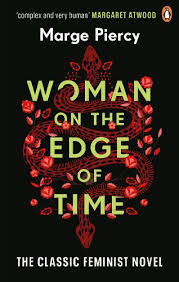A genuinely great book written from the rare view of a dispossesed – an immigrant Latino woman incarcerated in a mental institution.
Tag Archives: books2020
Book mini-review: Ghost Train to the Eastern Star by Paul Paul Theroux

A 2008 travel memoir – from London to Japan via the ruins of Soviet Block.
Some sentences are crystalline beautiful. But relishing the absence of Western man creature comforts – dirty Romanian train with a half-feral cook sticks in mind – is less endering
It’s very “white male memoir”. I cannot help but think that apart from an occasional worry that a taxi driver would rob him, the author doesn’t feel a privilege to be a man and travel whenever he wants. Theroux revels in problems. He spends very little time describing local food and talking to local prostitutes in detail, a few of them are Eastern European. He says that he didn’t use their services, but I wonder.
In Istambul, the author describes in detail Orphan Pamuk’s personality but says that another Turkish novelist, Elif Shafak’s beauty made him forget what they were talking about.
A bag of books for a £

In The Final Circle of Paradise by the Soviet SF writers brothers Strugatskys (of the Solaris fame), the protagonist approaches a track, from which citizens are given free things. Two teengae girls are lazily and disgustedly digging in a heap of clothes. He collects an armful of books, encyclopedias, but then he puts everything in place and leaves. The Strugatskys probably had a window to 21st century Britain.
Once I saw an announcement for a big second hand clothes fair, £15 per kilogram. I year ago I went to the library, and there is a sale “Bag of books for a pound.” I did not believe it, I asked the librarian about it. “Yes, they say it’s true. Do you have a bag? If not, we can give you a plastic one.”
I loaded five thick hardback books into my backpack, although some of them have it flying off – Irwin Welch, Paul Theroux, Patricia Cornwell, even if I’m tired of her, Norwegian detective, American writer, about whom it is written on the cover that she looks like Alice Munroe.

A year later I read:
- Paul Theroux
- The Sex Lives of Siamese Twins by Irvine Welsh – why an old white heterosexual male should not write a novel from POV of a young bisexual woman? Because ut doesn’t ring true on any level. The heroine behaves like a man without a penis – the female eunuch of Germaine Greer.
- The Vanished by Lotte Hammer – good nordic noir
I miss the library. Even after after the local library was closed and I lost the human connection with the librarians, there was a pleasure of collecting the books and picking one at random from the displays. Seeing books for children and in different languages. Seeing if there is a new exibition in the local art gallery the next door.
Now the library is open for two hours a couple of hours a week in the middle of the day. I realised that while I work 3 days a week from home, I can easely collect the proper books but somehow amidst “Stay at home, save lives” slogans everywhere it doesn’t feel right. The COVID had shifted my reading online from 20% to 90%.
Books2020: Non-fiction
National Endowment for the Arts (USA) found that 23 percent of American adults were “light” readers (finishing one to five titles per year), 10 percent were “moderate” (six to 11 titles), 13 percent were “frequent” (12 to 49 titles), and a dedicated 5 percent were “avid” (50 books and up). I read 45 books in 2020 (43 in 2019). Considering a lenghy quarantine, should have been more, but there was too many interesting articles (including scientific) about SARS-CoV-2.
Non-fiction:
* Collapse by Ian Kearns – the end of the EU is nigh.
* Pale Rider: The Spanish Flu of 1918 and How It Changed the World by Laura Spiney – about the Spanish flu pandemic. If you read one book during this epidemic, make it this one. A Russian variant of my blog post was published by Russian scientists’ newspaper Troitsky Variant.
* She Said by Jodi Kantor and Megan Twohey – breaking the Weinstein scandal.
* 1914: Goodbye to All That: Writers on the Conflict Between Life and Art review – war reimagined from different vantage points. Janet Winterson writes that modern low-quality mass entertainment is designed to keep the masses satisfied with their diminishing level of life.
* The Pandemic Century by Mark Honingsbaum – “a history of Global contagion from Spanish Flu to Covid”. Not as good as “Pale Rider” but gets better with progress.
* Payback: Debt and the Shadow Side of Wealth by Margaret Atwood. Inspired by the 2018 crises. Starts well but wanders.

